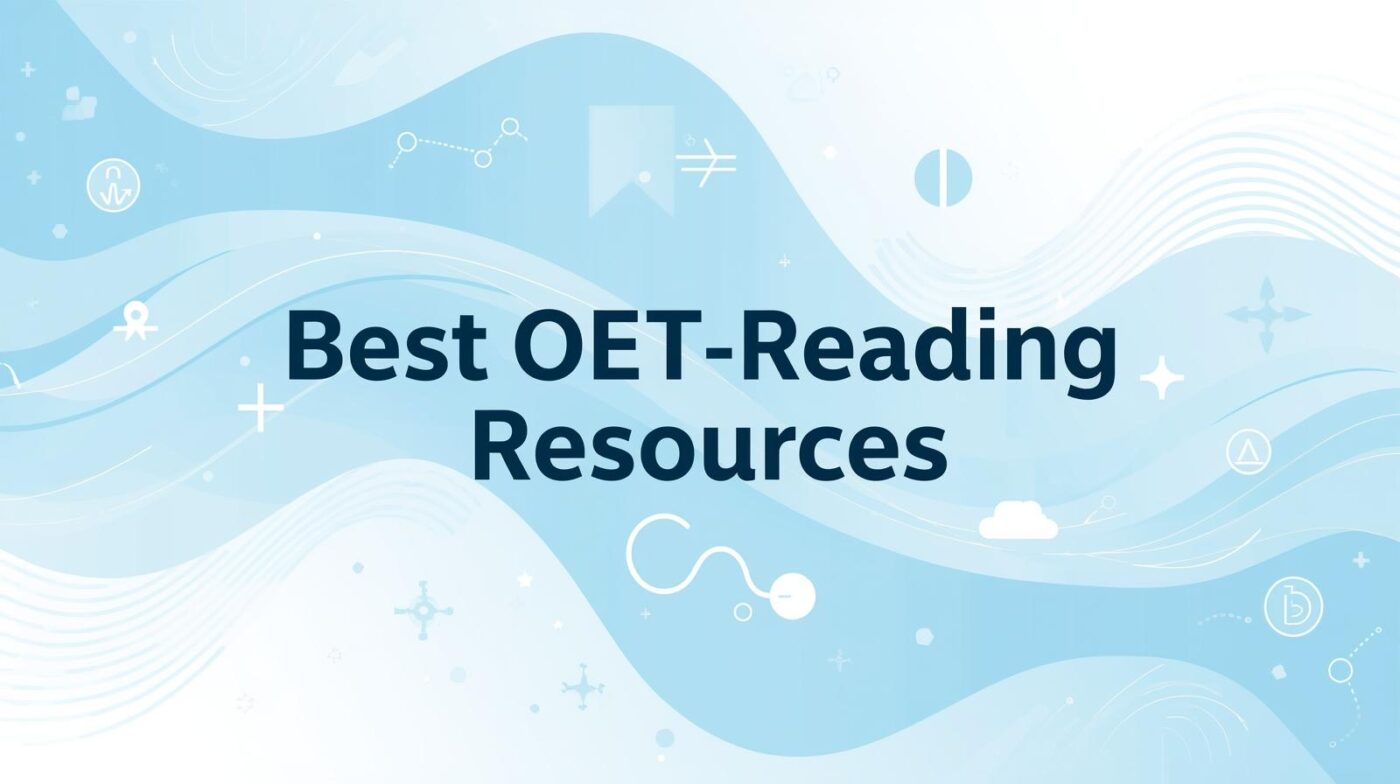OET Strategies, Reading
OET Reading Practice: 5 Best Websites and Study Tips
If you’re preparing for the OET, you’ve probably noticed one major challenge — the limited number of quality study materials available.
This becomes especially tough if you fall short in Reading or Listening. Often, candidates feel their only option is to redo old mock tests.
To help you move beyond that, this article introduces several other useful resources you can use to strengthen your OET Reading skills.
Resource 1. Paid Online Materials
The simplest option is to purchase web-based materials from trusted OET preparation providers.
Many candidates today mainly use OET Online (https://oetonline.net.au/) and Benchmark Education (https://edubenchmark.com/) for their preparation.
Both platforms provide stable content and practical mock tests, and Benchmark’s interface in particular now closely resembles the actual OET test layout.
Depending on your plan, you’ll gain access to different numbers of practice tests. Higher-tier packages unlock older versions of test materials, with a total of about 20–30 full mock exams available.
However, there’s one drawback: online review can feel less engaging.
Because everything is browser-based, some learners find it harder to retain what they study, and reviewing mistakes requires more motivation.
💡 Tip: You can also try OET Bank’s learning materials (https://oet-bank.com/shop/), designed as structured review tools rather than simple mock exams.
They focus on helping you analyze errors and strengthen specific skills — a balanced complement to larger platforms like OET Online and Benchmark.
Resource 2. ABC News Australia
ABC News Australia is run by Australia’s national broadcaster.
It publishes a wide range of international and domestic stories every day, allowing you to practice reading while staying updated on current healthcare and social topics.
Interestingly, many OET Reading passages are based on similar themes often featured in ABC News articles — such as public health, patient education, or medical ethics.
This site is free and rich in variety, but keep in mind:
- The level of specialization is relatively low.
- The text difficulty is slightly below OET-level.
Because it’s written for the general public, it’s ideal for those who want to build comprehension speed or ease into more advanced reading.
Resource 3. University of Cambridge Research News
The University of Cambridge Research News page features summaries of academic studies conducted at Cambridge.
Compared to ABC News, these articles are more technical and provide excellent practice for advanced academic reading. Many of them also explore science, healthcare, and psychology topics relevant to OET test themes.
Some past OET Reading passages have even been modeled on similar research reports. The only limitation is update frequency — usually three or four times per week — but each article is substantial enough to make regular review worthwhile.
Resource 4. Academic Journals
Academic Journals is an open-access publisher hosting papers from multiple academic fields.
It’s an outstanding source for learning complex vocabulary and sentence structures similar to those found in OET Reading texts.
The downside? Page loading time. Even with strong Wi-Fi, each page may take 10–20 seconds to load — something that can test your patience. But if you can get past that, it’s one of the best resources for challenging, domain-rich reading.
Resource 5. Hospital Libraries
Hospital library websites can be extremely effective for Part A preparation.
Examples include:
- Mount Sinai Health Library – https://www.mountsinai.org/health-library
- Mayo Clinic – https://www.mayoclinic.org/
Originally created for patient education, these libraries offer accessible explanations of conditions, symptoms, and procedures — ideal for revising unfamiliar medical topics or reviewing reading passage themes.
Study Strategies
When studying Reading, the goal should always be targeted learning — identifying and addressing your personal weaknesses.
- If vocabulary is your challenge, take time to look up every new word and rephrase sentences in simpler English.
- If reading speed is the issue, practice under time limits, then summarize the passage to confirm understanding.
- For close reading, avoid literal translation. Try explaining the text as if you were teaching a beginner-level student.
Avoid the habit of “just skimming.” Based on years of OET instruction, most reading difficulties come not from vocabulary gaps but from incomplete interpretation.
When your comprehension is shallow, the knowledge you retain is fragile — leading to the common trap of thinking you understand when you actually don’t.
Improving your ability to interpret accurately is the true key to consistent success in OET Reading.
Study with OET BANK
Stop wasting time comparing OET materials.
With OET BANK, you get:
- Premium-quality OET materials, built by professionals
- A focused, efficient study path — no unnecessary content
- A system designed to help you pass OET once — without trial and error
If you want to prepare properly and pass with confidence,
you don’t need to look anywhere else.
Pick your materials and start today — with OET BANK.




